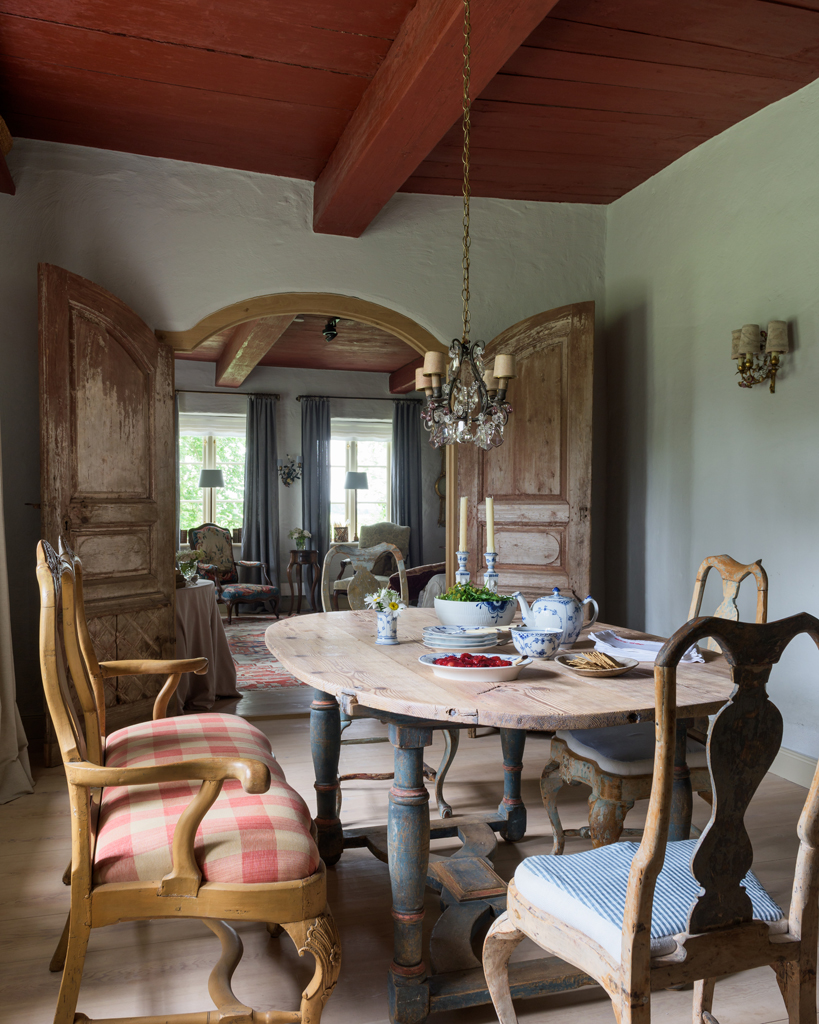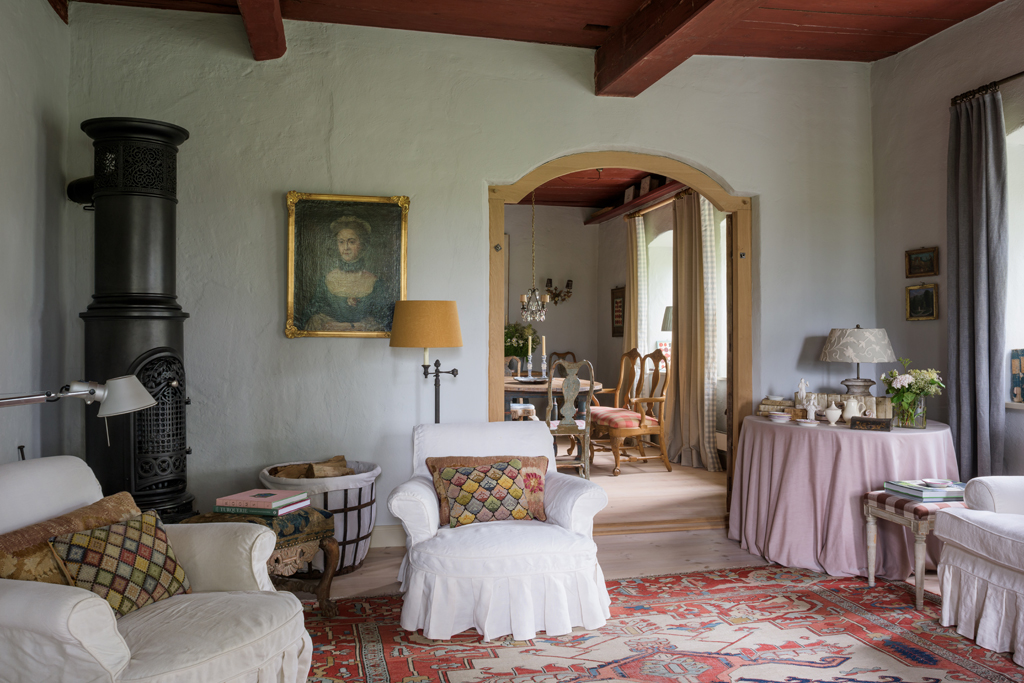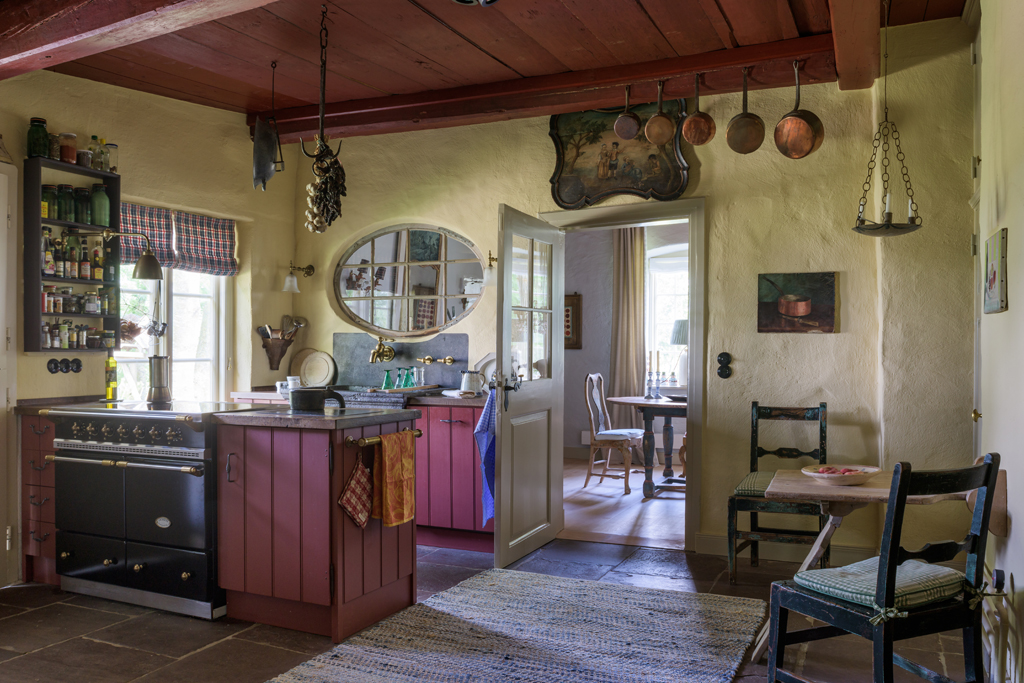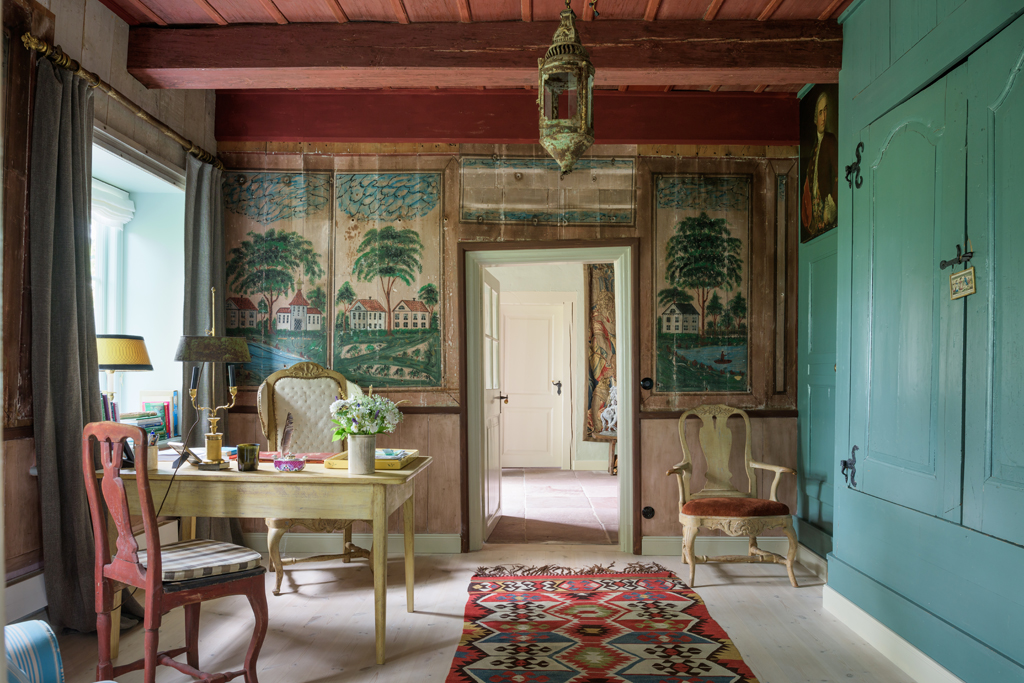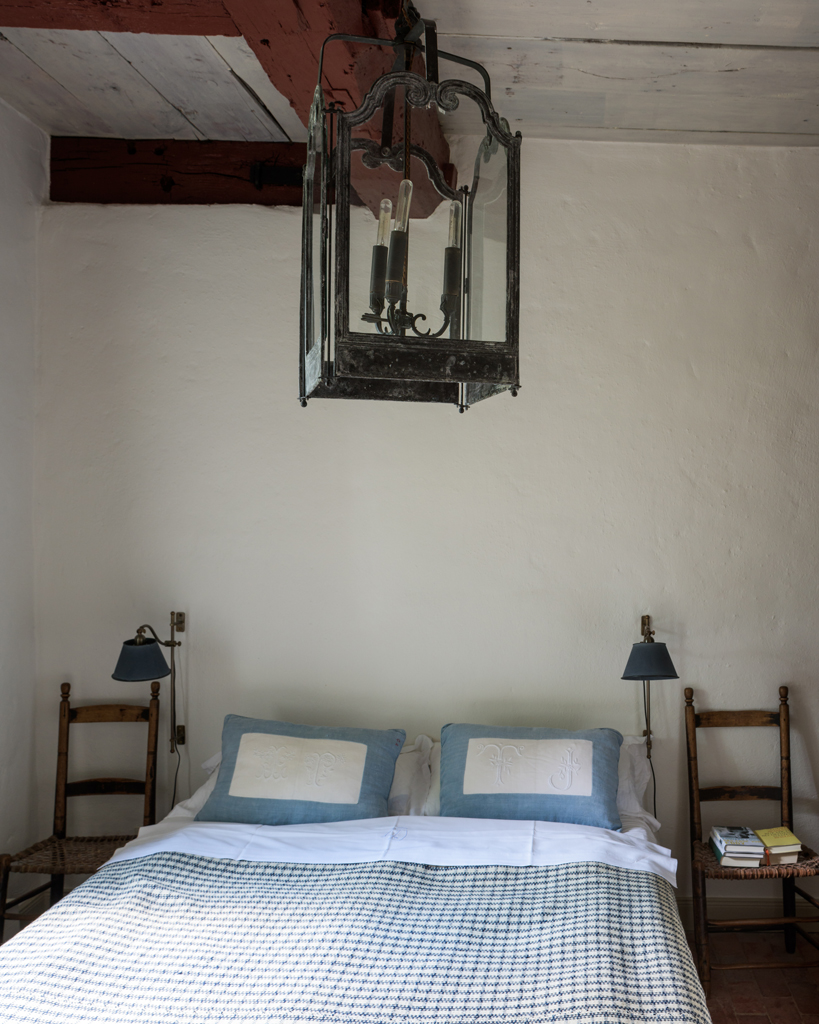The humble charm and character of a 17th-century cottage in the German countryside captures the imagination of a designer with a passion for history.
Alle Projekte
PETER NOLDEN HAD LIVED SEVERAL OTHER LIVES BEFORE HE BECAME A MUCH-SOUGHT-AFTER INTERIOR DESIGNER.
First he was a nurse, then he was a teacher, and then, in his 30s, he went back to school to
become a psychologist. It was only when he landed in the Hanseatic harbor city of Hamburg
in his early 40s that he allowed himself to make a career of his lifelong love: collecting beautiful
old objects and furniture.
In 1996, he opened a little antiques shop in Eppendorf, a tony enclave near the Aussenalster
lake, which is lined with historic villas. He jokes that all the skills picked up in his previous
professions have helped him succeed in this low-key city with lots of quiet wealth. “I know
how to listen and read into the silence,” he says.
Also, once he signs on to a project, Nolden is committed. He takes on no more than two
homes a year, because everything he sources for a property is “made or found,” he notes.
“What I do is haute couture, not prêt-à-porter.”
When it comes to designing his own homes, he is no less exacting. “What is important
to me is authenticity, that no material is fake. That is perhaps what I’ve taken from my
psychology training,” he says, only half in jest. “I would rather have less, but have what is
original and real.”
That goes for his interiors. In the 1990s, he and his partner bought a 19th-century manor
house in Normandy, France, and spent several years bringing the interiors back to their
original state and outfitting it with the appropriate furniture. Nolden loved the house but
eventually became frustrated by the length of time required to travel there.
Just over an hour’s drive north of Hamburg is Schleswig-Holstein, a rural area of dandelionyellow
rapeseed fields, farms, reed-thatched homes, and raw coastline. It was there that Nolden
eventually found, with the help of an agent, a renovated 17th-century thatched-roof farmhouse.
It was set on three acres of overgrown land and built on a man-made island in the region’s
floodplains just about 10 miles from the North Sea. “I immediately fell in love with the original
stone floors and the red ceilings,” says Nolden. “The former owners had uncovered them.
Nothing had been done to the color of the beams since the house had been built centuries ago.”
He adds, “That’s what I love the most. Finding a house that is ‘in its own juice,’ as they say
in French. Then I can dive into the history and use that as a starting point. Of course, we all
want modern infrastructure, hot water, and heat, but I like to walk into a historic house and
find myself in the age that it was built.”
Nolden oversaw several other adaptations that the original owners would not recognize. He
opened up walls between the kitchen, living room, and dining room, installing antique wooden
doors he found in Sweden between the latter two rooms. The table and seating in the dining
room he also found in Sweden. “During the era in which the house was built, the region
belonged to Denmark,” he explains. “So I sourced much of the furniture in Scandinavia.”
Now, after two decades as an interior designer, Nolden says he has no plans to switch
careers again. “I was happy as a nurse and as a teacher, and I was very happy as a psychologist,
but at one point, it was over for me,” he admits. “Now, as a designer, I am sometimes
tired, but I am never bored.”


